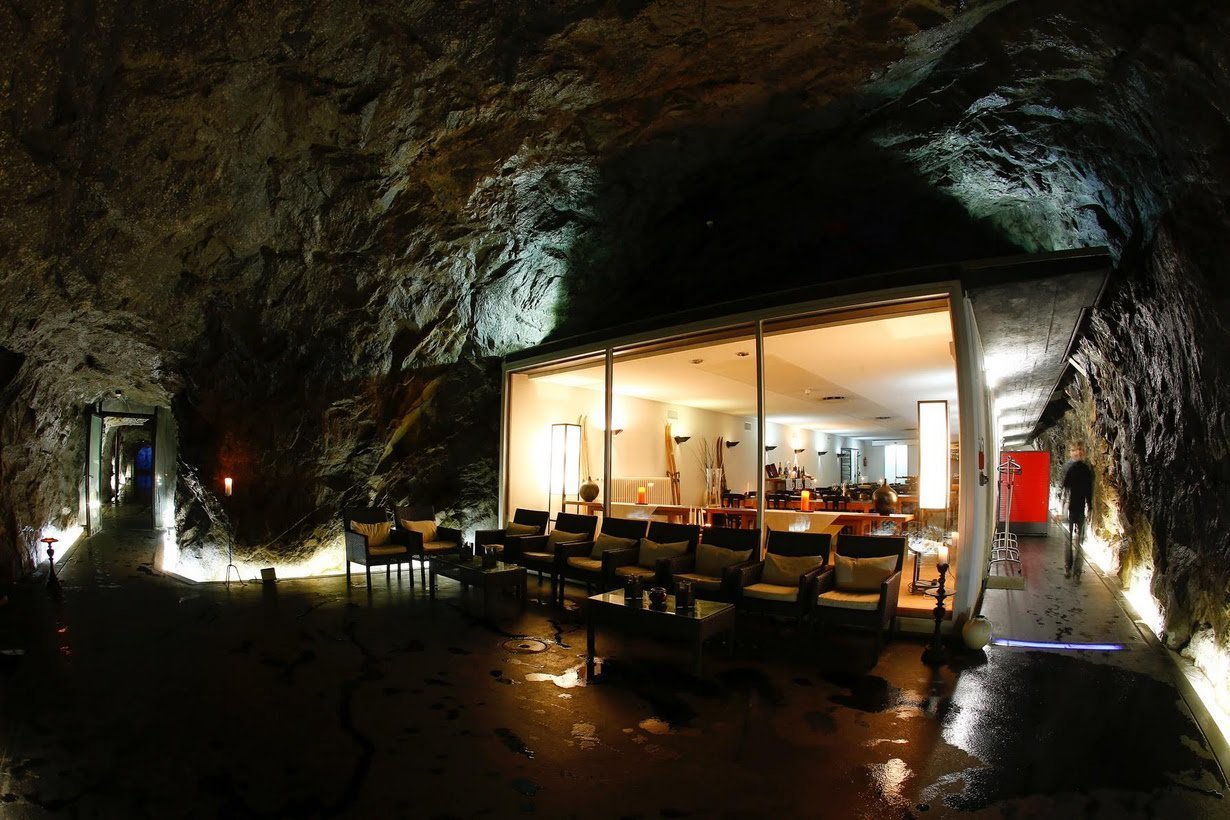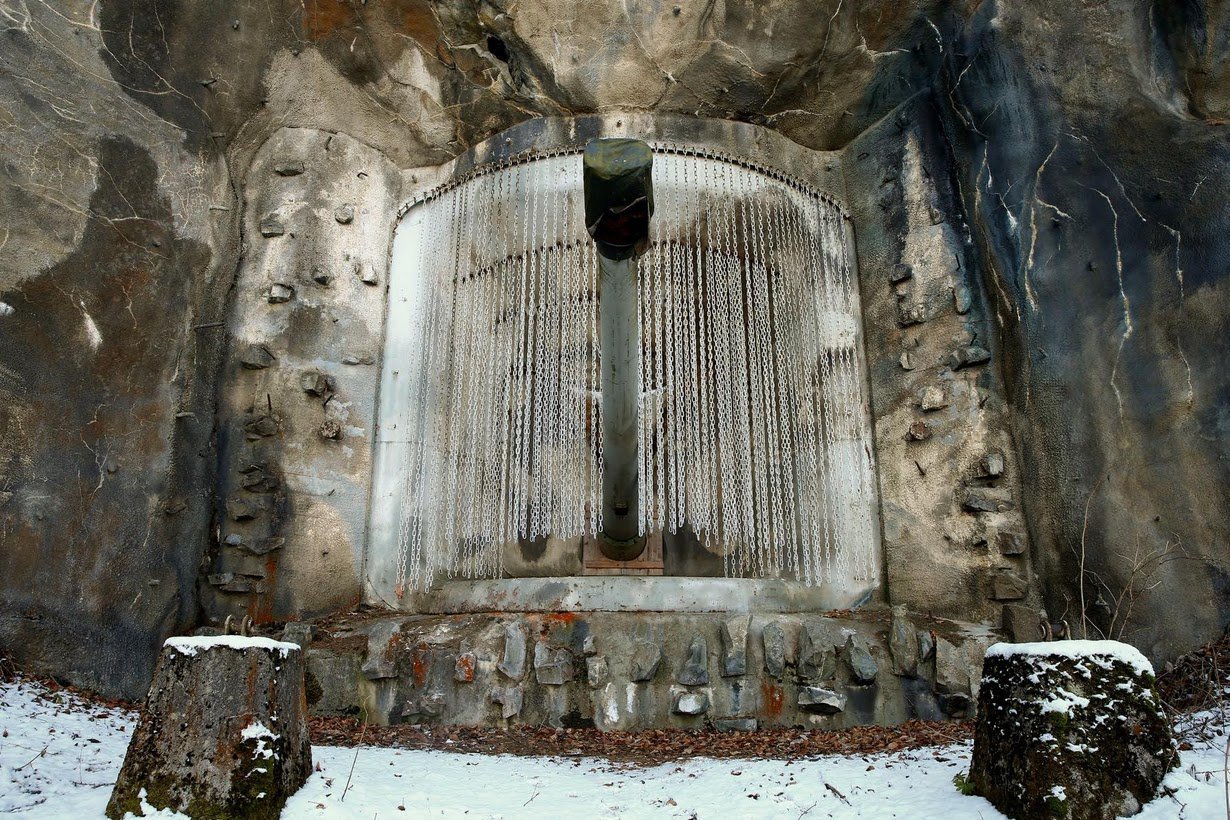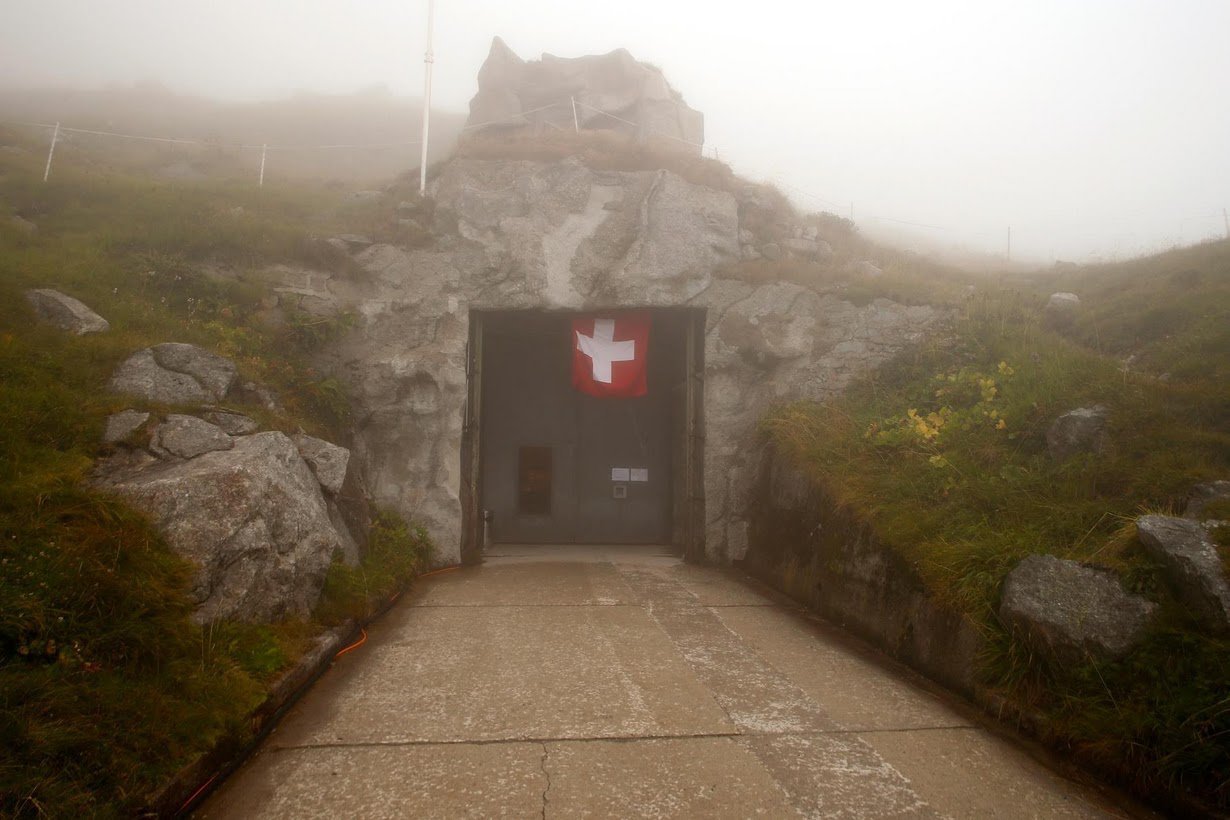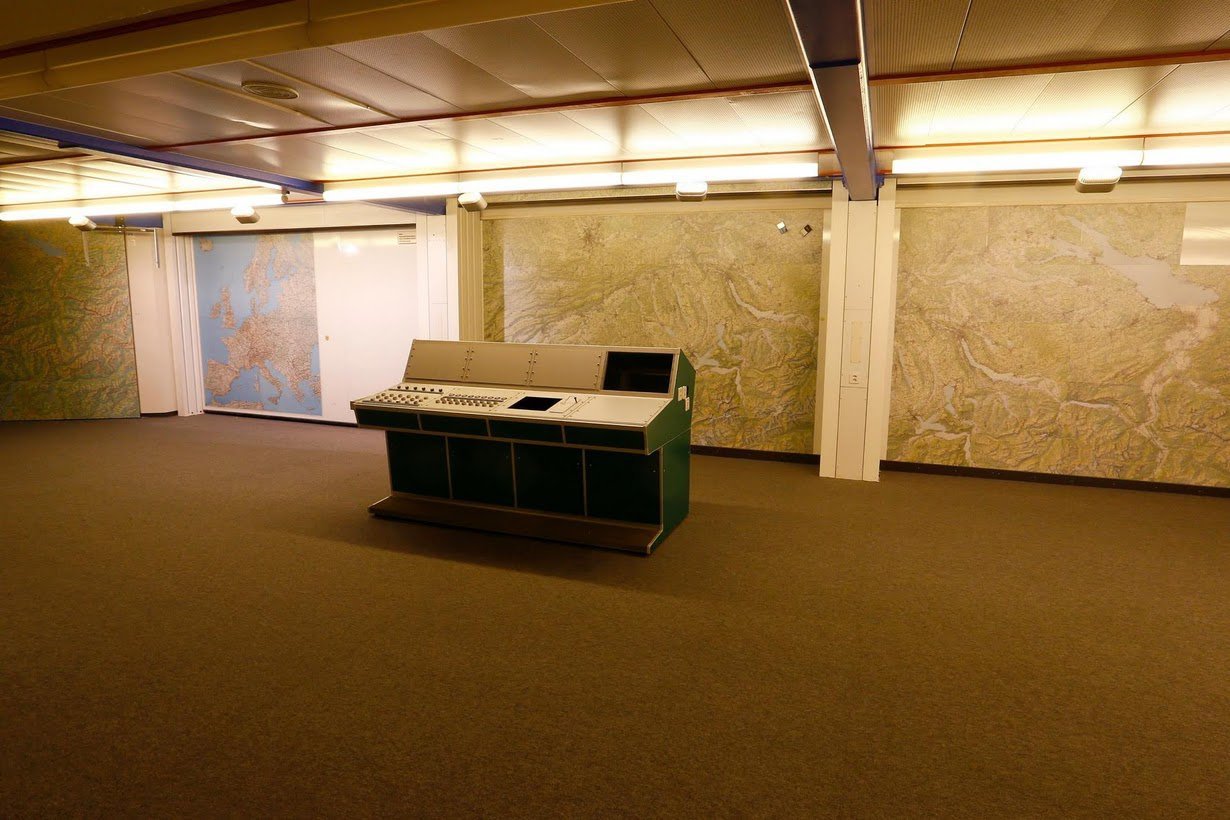For upwards of almost $200 a night, guests at a Swiss hotel might expect to catch a glimpse of the towering Alps or overlook one of the country’s famous lakes.
But visitors to Hotel La Claustra get a room without a view.

The 17-room hotel is buried in the Gotthard mountain range and, with cavernous walls and minimalist interior, offers the chance to spend a few nights in an ex-army bunker.
As per the images there is a bleak brick entrance, decorated only with a Swiss flag. Inside, a restaurant, windowless rooms and lounge are all hacked from the bare, surrounding rock.
La Claustra is part of a wider trend in Switzerland for recycling the plentiful decommissioned bunkers first carved out to defend the famously neutral country from foreign invasion.
From data centers to museums, from mushroom farms to cheese factories, businesses have been refashioning the former strongholds.

“Along with our processors, our key selling points are the Swiss brand and the physical safety of this bunker,” said Frank Harzheim, managing director at Deltalis data center, located in a bunker which once housed up to 1,500 soldiers.

During World War Two, Switzerland had a network of around 8,000 bunkers and military shelters. Faced with high maintenance costs and a cooling threat of invasion, the Swiss army since the 1990s has handed a property unit the task of trimming that number down.

The vast majority have now been bought, sealed off, or set aside for historical preservation and are dotted around Switzerland, often still disguised as barns, houses and medieval castles.
“Notloesung”
The defensive tendencies that spawned Switzerland’s bunker building are legendary.
According to one possibly apocryphal story repeated with pride for more than a century, Germany’s Kaiser Wilhelm II on a visit in 1912 was said to have asked a Swiss infantryman what 100,000 Swiss soldiers would do if 200,000 German invaders stormed over the border.
“Each would have to shoot twice, your majesty,” came the supposed reply.
Museums like Sasso San Gottardo, built in a former fortress, look to tell the story of Swiss efforts to stave off invasion in the 20th century.
After Germany invaded France in 1940, Switzerland was surrounded by Axis powers and recognized that it would be out-gunned in any assault.
To hold off an invasion, Switzerland sought to make itself prohibitively difficult to conquer. Under the plan dubbed the National Redoubt, much of the country’s manpower and firepower would retreat to the mountains if a foreign aggressor attacked.
Through its chain of fortresses and bunkers, Switzerland would keep control of the mountains along with key transit routes.
“This was a pragmatic solution but also a very problematic one,” said Rudolf Jaun, a former Swiss history professor at Zurich University. “The Redoubt strategy was what we call in German a Notloesung (emergency solution).”
During the Cold War, concerns turned to nuclear attack. The Swiss ramped up military spending and many homes were required to be equipped with bomb shelters.
As with the bunkers, the Swiss have found new uses for these bomb shelters too – nowadays many are simply used to store family knick-knacks and wine collections.
Feature image source: Reuters

















